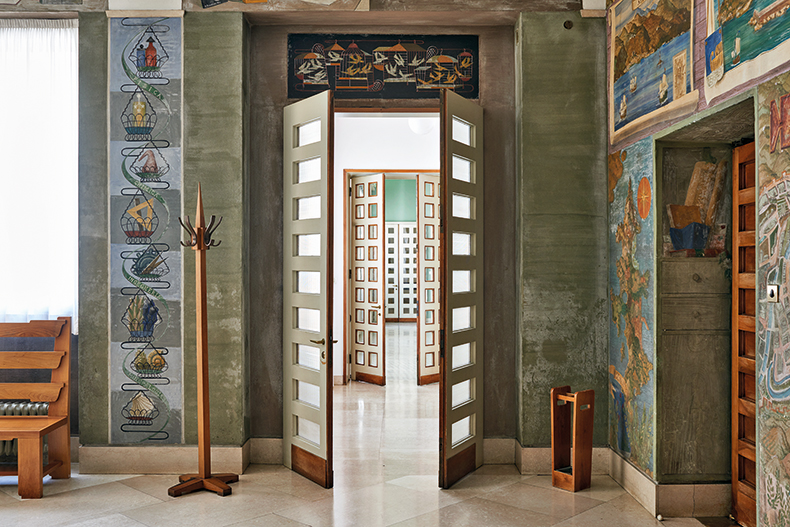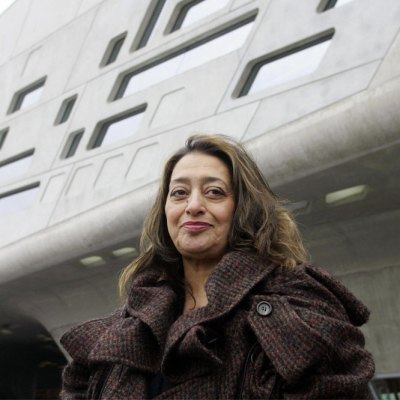From the June 2022 issue of Apollo. Preview and subscribe here.
The bucranium has always struck me as an odd decorative device to resurrect from the classical past. Don’t get me wrong; I’m not the squeamish sort. I once got trapped in a butcher’s walk-in fridge, and gave in to panic only after a full half hour of hammering on the thick steel door had produced no response from the outside world. And I can stare down an O’Keeffe cow skull as well as the next person. But bovine remains as ornament for Renaissance palaces or Georgian drawing rooms? Like I say, odd.
At Palazzo Bo in Padua, however, the ox-head motif has particular relevance, as I discover on a tour one Saturday in April. The building’s name comes, in abbreviated form, from a 15th-century inn on the site, the Hospitium Bovis, itself named for its ties to the meat-supply business. Since 1493 this palazzo in the city centre has served as headquarters for Padua University, which was founded in 1222 – it celebrates its 800th anniversary this year – by a group of professors and students from Bologna seeking educational autonomy, free from papal or imperial influence. That freedom continued under the secular Venetian Republic and saw Padua attract some illustrious names to its university, from Copernicus and Galileo to Casanova and Goldoni. (Galileo’s wooden lectern – made by his students – is on display next to the Great Hall, which was ordinarily the preserve of the law faculty; the astronomer was given special permission to teach there to accommodate the crowds that attended his lectures.) Padua also hosted the first woman to receive a university degree: Elena Lucrezia Cornaro Piscopia, a Venetian noblewoman, graduated in 1678 with a doctorate in philosophy.
Murals by Fulvio Pendini and Piero Fornasetti form a backdrop to furniture by Gio Ponti in the Galleria del Rettorato in Palazzo Bo. Photo: Tom Mannion

The city’s relative freedom from the religious authorities also contributed to the university’s early strides in anatomy, which has left a fascinating relic at Palazzo Bo: the world’s first anatomy theatre, built in 1594. To access this structure from below, we’re led into a kind of anteroom which displays pages from the university archives but which used to be, in an unpalatable echo of the Bo’s origins, the cucina anatomica, where the corpse was prepared for dissection. Then, passing through a door under the words Mors ubi gaudet succurrere vitae – ‘Where the dead are pleased to help the living’ – I get a cadaver’s-eye-view of the theatre, its six elliptical tiers of carved-walnut balustrades pressing in around me, built tall enough to prevent any fainting spectators from falling. The windowless room is necessarily compact and I’m surprised to be told it could fit nearly 250 people – including performing musicians, supposedly, to lighten the atmosphere.
The 16th century was the first significant period of architectural alteration and enlargement at Palazzo Bo, with much of that work entrusted to the architect Andrea Moroni. His cloister-like Old Courtyard is colourfully tattooed with the family crests of students and academic staff present at the university between 1592 and 1688, at which point the tradition was banned for lack of available space.
The Galleria del Rettorato leads into the Circolo dei Professori. The doors and furniture were designed by Gio Ponti. Piero Fornasetti painted many of the frescoes including, to the left of the doorway, a frieze with scrolls and symbols representing different sciences. Photo: Tom Mannion

Any buchrania I happen to spot as we move through the complex are not, however, from the 16th century, but from frescoes painted in the 1940s. These decorations were the culmination of a huge redesign of the palazzo instigated by Carlo Anti, the university’s rettore from 1932–43. Sections of the city block were restructured or removed and a new courtyard carved out, this work overseen by Ettore Fagiuoli, an architect from Verona. Meanwhile, Anti asked the Milanese architect and designer Gio Ponti to work on the interiors of this new wing, as well as to update some of the old spaces. By this time Ponti had already founded the magazine Domus and launched the design company Fontana Arte, which would produce much of the lighting for his Padua project. He fitted no stylistic mould, but espoused what might broadly be termed a kind of decorative modernism – one that needn’t be an enemy of the classical.
This he brought to bear at Palazzo Bo, most particularly in the delightful rooms of the Circolo dei Professori (professors meeting room), where Ponti designed everything from its cherrywood wall panelling and walnut-veneer reading tables to jaunty coat stands and sculptural bronze door handles. He enlisted artists including Piero Fornasetti, Massimo Campigli and Pino Casarini to produce frescoes and mosaic work throughout the palazzo. (Casarino painted the ‘Basilica’ with scenes from the university’s history in which Paduan students, often wearing the traditional feluca – a Robin Hood-style hat – perform heroic deeds, such as rising up against Austrian rule in 1848). But he also painted some of these decorations himself, notably the Scala del Sapere (‘staircase of knowledge’), assisted by artist friends Giovanni Dandolo and Fulvio Pendini, and his daughter Lisa. The scenes on the walls trace a scholar’s pursuit of learning, and Ponti ingeniously echoed their earthy colours in different strips of marble on the stair risers. The deepest red of all is repeated glossily on the handrail, a recent restoration to the colour Ponti had originally envisaged for it: in December 1941 the designer wrote to Anti to complain after hearing that the handrail had been painted the colour of strawberry ice cream, rather than the ‘pure Pompeian red’ he had indicated. The handrail is one of hundreds of Ponti-designed elements at Palazzo Bo that have been restored in time for the university’s big anniversary.
There’s an ox’s skull here, painted on the cloak of Ponti’s young knowledge-seeker. It’s a perfectly fitting reference to the palazzo’s history, as well as to the artist’s interest in the classical, which Ponti credited to the time he spent living in buildings by Palladio while recuperating from the front during the First World War. But it also seems to me an uncomfortable reminder – if a more subtle one than the unmistakably fascist arches of Fagiuoli’s New Courtyard beyond – of the climate in which these interiors were made. In 1938, when the work to renew Palazzo Bo was well underway, the Italian government passed racial laws barring Jews from public life, resulting in the expulsion of more than 200 people – students, teachers and other staff – from the university. Outside the entrance to this part of the palazzo, six of the pavement’s cobbles glint gold as you pass them; these are engraved-brass Stolpersteine, or ‘stumbling stones’, placed here by the German artist Gunter Demnig in 2018 as memorials to six members of the university who were killed at Auschwitz or Dachau. It’s hard to see any classicising elements in Ponti’s decoration and design in this context and not think of Mussolini’s contemporaneous mobilisation of ancient Rome, its literature, architecture and symbolism, to serve the Fascist project.
The reading room in the Circolo dei Professori, with all the furniture and fittings designed by Gio Ponti. Photo: Tom Mannion

What to make, too, of the sculpture Palinurus in the stairwell? Created in 1946, this marble depicting Aeneas’s star-gazing, ill-fated helmsman – one of many sacrificial victims on the path to Roman nation-building – was dedicated to a graduate named Primo Visentin, a Resistance leader killed towards the end of the war. It was commissioned by Visentin’s fiancée from Arturo Martini, who had thrived as a semi-official sculptor to the regime, but in 1945 had published an essay in which he called his medium a ‘dead language’ (this was his final work before his own death in 1947). Politically, ambivalence reigns in these interiors, even if aesthetically they are superb.
At the top of Ponti’s Scala del Sapere his student, now wizened with age, stands dressed in a philosopher’s tunic, the words Ancora imparo – ‘I am still learning’ – above his head. His books appear to tumble from him and, for a moment, Ponti’s stairway seems to represent less an ascent of progress in one direction and more a hopeless, Sisyphean struggle. As I leave the historic Palazzo Bo to the sounds of a student protest against Putin’s invasion of Ukraine, this much at least is clear: we still have much to learn.
From the June 2022 issue of Apollo. Preview and subscribe here.


